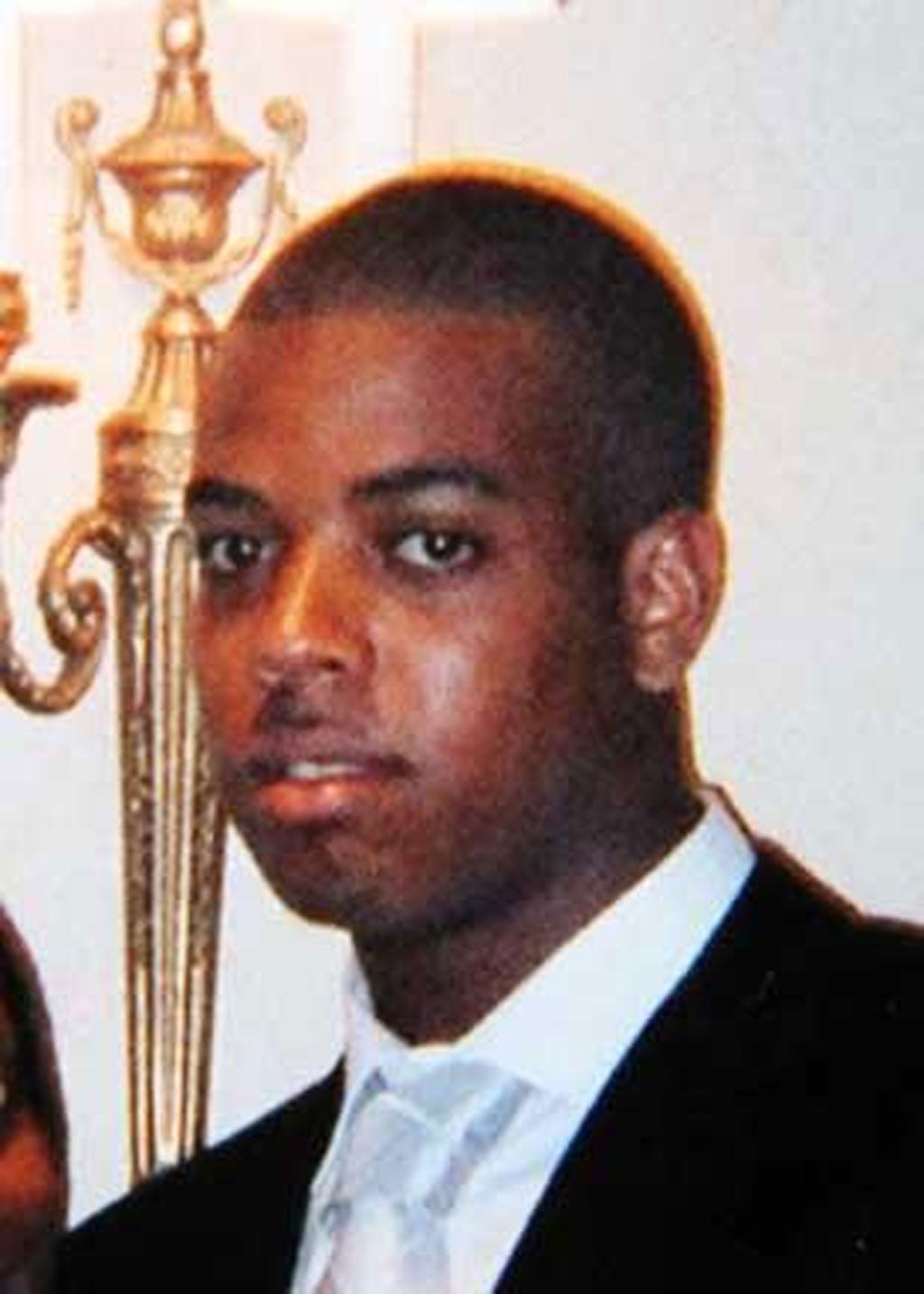Police officer shot unarmed man six times in back of car
Public inquiry opens into fatal shooting of Azelle Rodney by Met officer in north London in 2005

A police officer shot a suspect six times within a second of pulling alongside his car, an inquiry heard today.
An unarmed man was shot dead by a Metropolitan Police officer who opened fire less than a second after pulling up alongside his car, an unprecedented public inquiry has heard.
Azelle Rodney, 24, was shot six times by the officer, known only as E7, as he sat in the back of a Volkswagen Golf after it was forced to stop in Edgware, north London, by three unmarked police cars on 30 April 2005.
The armed officers were acting on intelligence initially obtained by Her Majesty's Custom and Excise – then responsible for drug investigations – and believed the car's three occupants were about to "rip off" a Columbian drugs cartel using machine-guns.
On the first day of the public inquiry into Mr Rodney's death at the Family Division of the High Court in central London – the first time such an inquiry has been held into a fatal shooting by police officers – the chronology of events, intelligence logs and unanswered questions was laid out.
Ashley Underwood QC, counsel to the inquiry, told chairman Sir Christopher Holland: "To reach your conclusions you may have to choose between conflicting accounts. To do that, you may have to decide whether the contradictions are innocent or not."
The inquiry heard how HMCE believed a man known as "the Principal", an associate of the Columbians, was planning a "rip-off" with a group of men using machine-guns – and alerted the Met on 5 April 2005.
That time it did not happen, but the same intelligence reappeared three weeks later. Operation Tayport was convened and triggered 48 hours of rapid intelligence gathering and surveillance in an attempt to identify where the armed robbery would take place and who would carry it out.
The court was shown video footage of the car chase, filmed by an officer in a following car. It ended in a "hard stop", with three police cars boxing in the Golf and E7 opening fire into the right-hand side passenger window.
The inquiry also saw a partial reconstruction which showed what E7 would have seen as he fired, and the likely trajectory of the six bullets that hit Mr Rodney in the chest, neck and face.
Three guns were found in the Golf – one was deactivated, a second was not cocked and had its safety catch on, and the third was loaded with the safety catch off in a rucksack. There were no automatic weapons. The first information released to the press immediately after the shooting wrongly claimed that Mr Rodney was armed.
Mr Rodney was wanted by police in connection with an alleged serious assault in 2004. One of the key questions to be examined is why, despite being known to the Met, he was not identified and arrested earlier. The name "Azell" was identified by HMCE as a suspect, but the connection was never made with Mr Rodney, the inquiry heard.
An inquest such as that held after the death of Jean Charles De Menezes was impossible because coroners are not allowed to see intercept evidence obtained through phone taps.
This inquiry will examine all the intelligence, but the precise mechanisms by which it was gathered, including informants, will be protected. It is also the first time intelligence officers involved in such a case will give evidence.
Subscribe to Independent Premium to bookmark this article
Want to bookmark your favourite articles and stories to read or reference later? Start your Independent Premium subscription today.
